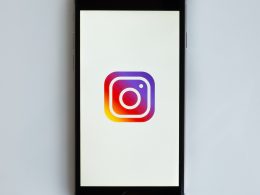Apple’s plans for an augmented reality/virtual reality (AR/VR) headset have been making waves in the tech world, with some analysts predicting that the company’s move into the space could be a game-changer. But as more details emerge about the device, it’s becoming clear that Apple’s approach is a bit scattershot – and some are questioning whether this will ultimately work in the company’s favor.
The first thing to note is that Apple’s AR/VR headset is not expected to hit the market until 2022 at the earliest, so there’s still plenty of time for the company to refine its plans. But based on what we know so far, it seems that Apple is taking a somewhat piecemeal approach to the technology.
For example, rumors suggest that the device will be able to operate in both AR and VR modes, with users able to switch between the two as needed. This could be a smart move, as it would allow the headset to serve multiple use cases – such as gaming, productivity, and social media – without limiting it to one particular niche.
However, other reports indicate that the headset will be a standalone device, rather than being tethered to a separate computer or console. This could be a significant drawback, as it would limit the headset’s processing power and potentially make it less versatile than some of its competitors.
Another potential issue is the cost. Some analysts have predicted that the headset could be priced as high as $3,000, which would put it out of reach for many consumers. This would make it a niche product, rather than a mainstream device that could drive widespread adoption of AR and VR.
Of course, Apple has a track record of turning niche products into mainstream hits. The iPod, iPhone, and Apple Watch were all initially dismissed as overpriced and underpowered, but went on to dominate their respective markets. It’s possible that the same could happen with the AR/VR headset – particularly if Apple is able to find a way to make it a must-have accessory for its existing user base.
But there are some reasons to be skeptical. For one thing, the AR/VR market is already fairly crowded, with established players like Facebook’s Oculus and HTC’s Vive competing for market share. Apple will need to offer something truly innovative and compelling to stand out from the crowd.
Additionally, Apple’s scattershot approach to the technology could ultimately work against it. If the headset tries to be all things to all people – offering both AR and VR modes, standalone operation, and a high price point – it could end up feeling unfocused and half-baked.
Overall, it’s too early to say whether Apple’s AR/VR headset will be a hit or a miss. But the scattershot nature of the company’s approach certainly raises some questions about its prospects for success. Only time will tell whether Apple is able to deliver a truly groundbreaking product that revolutionizes the AR/VR space, or whether it’s simply jumping on a bandwagon that’s already overcrowded.












